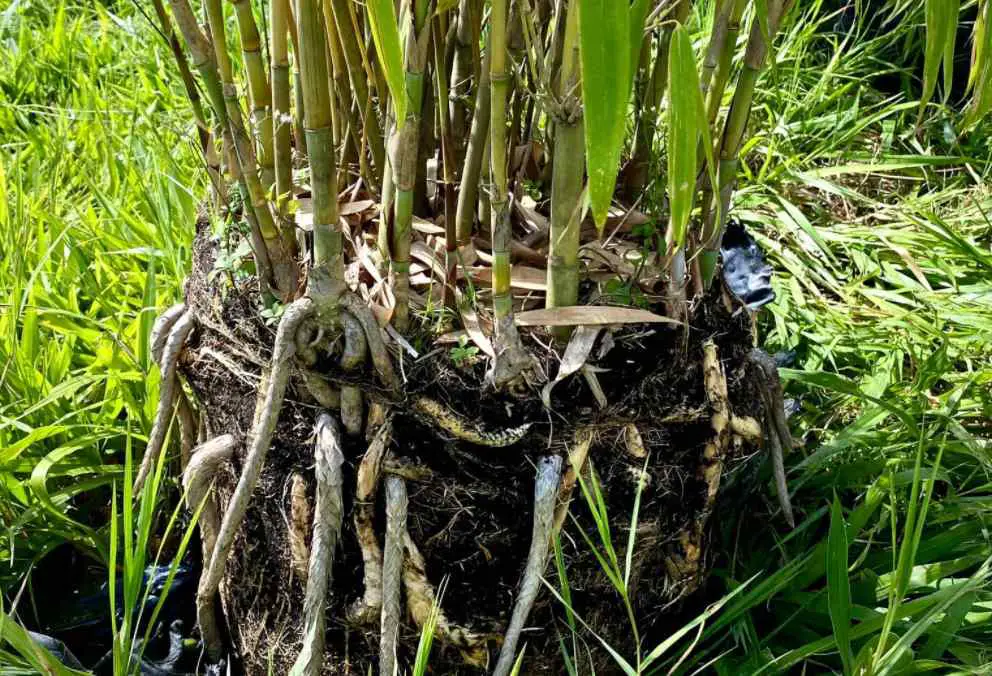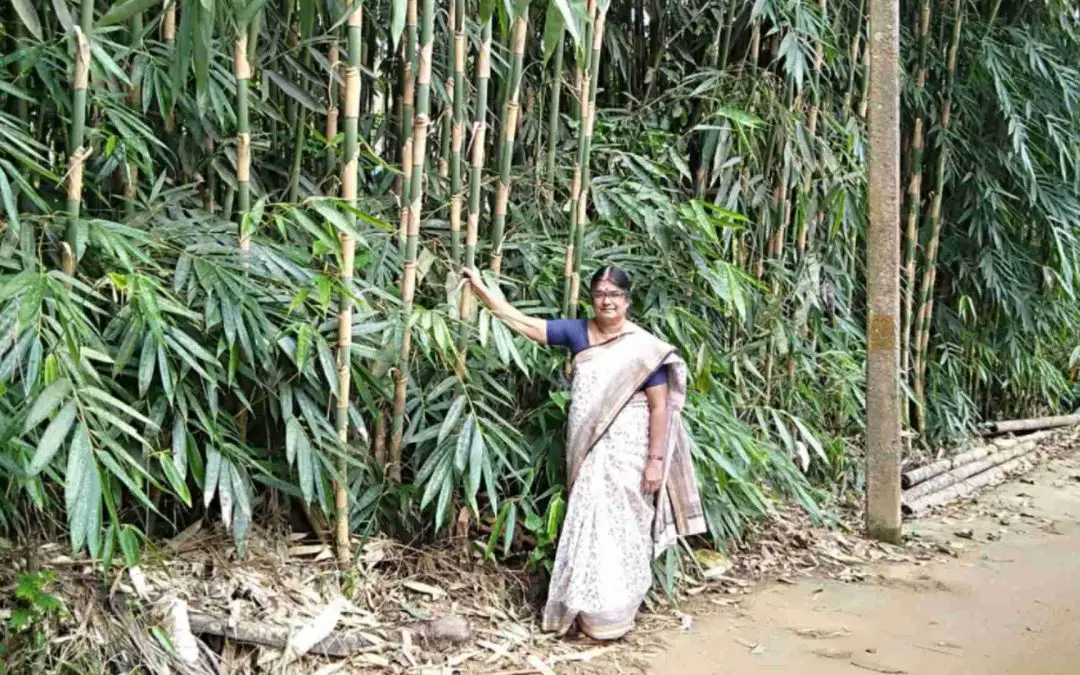Native to northeast India, Bangladesh, Myanmar and Nepal, Melocanna baccifera is an exotic bamboo species you won’t find at your local nursery. In tropical, Asian climates, this bamboo is widely admired as an attractive ornamental and a highly effective means of erosion control. The flowering of this species produces a pear-shaped fruit and has also caused some serious disruptions in northern India. Locals sometimes refer to it as Muli Bamboo or Berry Bamboo.
This article is part of an ongoing series about various bamboo species. Check out some of these other popular links to learn more.
- Introducing Bamboo: Genus by genus
- Bambusa balcooa: Beema Bamboo
- Bambusa oldhamii: Oldham’s Bamboo
- Chimonobambusa quadrangularis: Square Bamboo
- Dendrocalamus asper: Giant bamboo
- Phyllostachys nigra: Black Bamboo
- Pseudosasa amabilis: Tonkin bamboo
- Schizostachyum brachycladum: Sacred Bali bamboo
- Semiarundinaria fastuosa: Temple bamboo
Characteristics of Melocanna baccifera
Melocanna is a genus of tropical, clumping bamboo containing only two species, M. baccifera being the far more common of the two. Plants of this species grow in loose clumps with the culms somewhat spread out. Culms are tall, upright, and very straight, commonly reaching 40 or 50 feet in height and 2-3 inches in diameter.
The size and stature of the poles make for an attractive specimen, but the culm walls are quite thin and therefore not very useful as a building material. Melocanna baccifera is better for light crafts and weaving, for example, floor mats and baskets.
Large, draping leaves give this bamboo an interesting appearance, as do the culm sheaths that remain for a long time and create a striped effect (see image above). At 10-20 inches, the internodes are unusually long. Nodal joints bulge out with some prominence.
In addition to its pleasing appearance, Melocanna baccifera has an especially robust rhizome network, making it one of the best bamboo species for erosion control.
The flowering event of this Indian bamboo variety is also noteworthy. All members of this species bloom at the same time and produce a large and unusual fruit. Melocanna baccifera is sometimes called Pear Bamboo, because of this large fruit.
Fresh shoots of this species are not considered edible, but the fruit is. They have a sour flavor which you can improve by baking them.
Exceptional erosion control with Melocanna baccifera
Melocanna baccifera is one of the most effective bamboo species for erosion control. Although it’s a clumping bamboo, the roots are intrusive and tenacious. It also grows well in wetter soil, close to waterways where erosion is a common threat. Running bamboo tends to be better at binding the soil and preventing erosion, but the elongated rhizomes on this loose clumper make it a superior species, especially in tropical climes.

Given the increasing occurrence of extreme weather events, Melocanna baccifera is an excellent choice in areas like Bangladesh where flooding is already very common. Few things can prevent landslides as well as a vigorous, well-established grove of bamboo.
Flowering events with Melocanna baccifera
This exotic bamboo species is perhaps most famous for the gregarious (or synchronous) flowering event that happens roughly every 48 years. As often happens with bamboo, every specimen of Melocanna baccifera will flower at the same time, after which the plants die. But this species is remarkable for the large and plentiful fruit that it produces when flowering.
The fruit of Pear Bamboo is edible, but most of it remains on the bamboo where it over-ripens and falls to the ground. As it gathers on the forest floor, this bountiful food supply attracts large populations of rats. The rats enjoy a short-lived feast, but when the bamboo fruit runs out, the rats raid the local crops and warehouses. This has often led to incidents of famine among the local human population.
This unfortunate event is known as Mautam, which literally means “Rat Flood”. Although the flowering cycle is quite constant and predictable, happening every 48-50 years, the long interval makes it easy for people to lose track. The last time it happened was in 2006, and the Indian military was on the scene to prevent an all-out catastrophe.
The shoots of this bamboo species are also edible. In the northeastern state of Tripuri, they are revered as having the greatest nutritional value. Locals sometimes grind the shoots into flour in order to make delicacies like bamboo cookies.
Browse the bamboo
If you like geeking out on botanical minutiae and enjoyed learning about Melocanna baccifera, you can find hours of stimulating reading material throughout the Bambu Batu website. Consider perusing some of these informative articles.




















